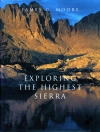This book presents the geomorphological diversity of England and Wales. These regions are characterised by an extraordinary range of landforms and landscapes, reflecting both the occurrence of many different rock types and drastic climatic changes over the last few million years, including ice sheet expansion and decay.
The book begins by providing the geological and geomorphological context needed in order to understand this diversity in a relatively small area. In turn, it presents nearly thirty case studies on specific landscapes and landforms, all of which are landmarks in the territory discussed. These include the famous coastal cliffs and landslides, granite tors of Dartmoor, formerly glaciated mountains of Snowdonia and the Lake District, karst of Yorkshire, and many others. The geomorphology of London and the Thames is also included.
Providing a unique reference guide to the geomorphology of England and Wales, the book is lavishly illustrated with diagrams, colour maps and photos, and written in an easy-to-read style. The contributing authors are distinguished geomorphologists with extensive experience in research, writing and communicating science to the public. The book will not only be of interest to geoscientists, but will also benefit specialists in landscape research, geoconservation, tourism and environmental protection.
قائمة المحتويات
Preface.- Foreword.- Author biographies.- Dedication to Denys Brunsden.– 2 Geological history and long-term landscape evolution. – 3 Rocks and Relief.- 4 The Quaternary .- 5 Human Impact.- 6 The Weald.- 7 Sandstone tors and escarpments of the Weald. – 8 Sussex coast .- 9 Isle of Wight – landslides and structural morphology .- 10 The Eastern Jurassic Coast.- 11 Isle of Portland .- 12 The landslides of East Devon and West Dorset .- 13 Rocky coast of South Devon coast and the history of disappearing Hallsands .- 14 Dartmoor – tors and periglacial legacy .- 15 Bodmin Moor.- 16 Land’s End.– granite geomorphology.- 17 Karst of Mendip Hills.- 18 The Cotswolds.- 19 Geomorphology of London.- terraces of the Thames.- 20 Periglacial heritage of East Anglia.- 21 The soft coast of Norfolk.- 22 The Fens.- 23 Peak District.- 24 Mam Tor and other landslides of the Dark Peak.- 25 Lake District.- 26 Limestone pavements and other karst features of the Yorkshire Dales.- 27 Brimham Rocks.- 28 The Whin Sill, Dolerite dykes and Hadrian’s Wall.- 29 Gower Peninsula.- 30 Brecon Beacons.- 31 Glacial landforms of Snowdonia.- 32 Geomorphological conservation and management.- Index.
عن المؤلف
Professor Andrew Shaw Goudie is a geographer at the University of Oxford specialising in desert geomorphology, dust storms, weathering and climatic change in the tropics. He is also known for his teaching and textbooks on human impacts on the environment. He is the author, co-author, editor or co-editor of many books and papers, and has received numerous awards for his work.
Piotr Migoń is a Professor of Geography at the University of Wroclaw, Poland. From 1997–2001 he was the Secretary of the International Association of Geomorphologists (IAG) and was IAG Vice-President from 2009 to 2013. His publications include Geomorphological Landscapes of the World (2010), Granite Landscapes of the World (2006), the Encyclopedia of Geomorphology (co-editor, 2004) and many papers in peer-reviewed international journals. Professor Migoń is also the series editor for World Geomorphological Landscapes, published by Springer.












